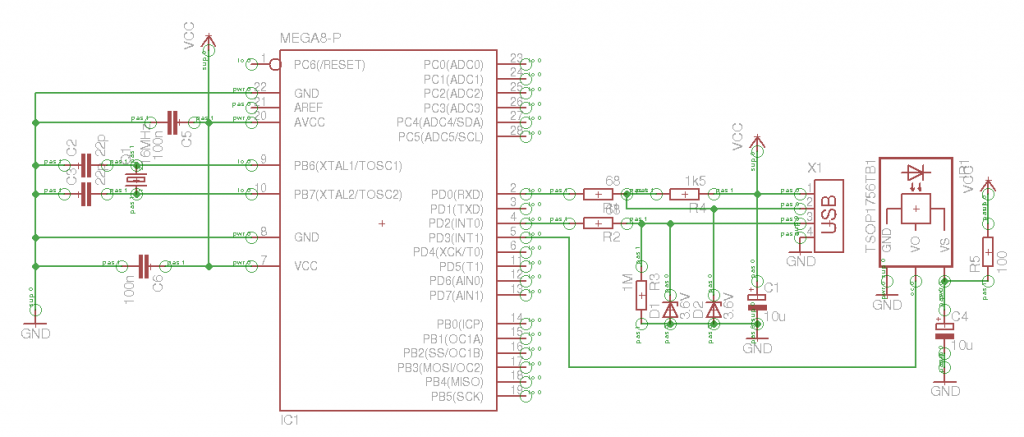There are these very neat IR Keyboards for sale at a German surplus retailer. At only one Euro they are a steal, but the reason they are this cheap is that they come without a receiver. So to the average person seeking a nice keyboard for their living room media center PC they are useless.
I bought one a few months back when they were still 2,95 € and tried to get it to work with LIRC, but had little luck. It kind of worked in raw mode but the key repeat rate was insane and also this wasn’t what I was after: I didn’t want to use it as a remote control with LIRC, but as a regular HID keyboard instead.
These keyboards were discussed on quite a few (mostly German) forums on the web, and someone even came up with a decoder for the IR protocol, but so far nobody seems to have written something that would act as a USB HID keyboard. So I had to do it myself.
I did it by simply combining the IR decoder with the V-USB project, which implements a USB HID driver on any old AVR device (not those expensive “U” types, which come with hardware USB).
It should run on any ATMega44/48/168/328 and even on the ATMega8. Which is quite nice because there is a type of USB ISP programmer called USBASP, which is also based on V-USB (I think), and those are available on Ebay for about 3,- €.
So all that’s left to do is to get one of those and solder a IR-receiver to it, so I can get it off the breadboard.
 |
| The schematic is really simple. And the best thing is, the USBASP already contains everything everything except the TSOP1756 ! |
As usual, the code can be found in my Github-repository.

Hi! I work with engineering website EEWeb.com and would love to do an exchange of website links and feature you as a site of the day on EEWeb. Let me know if this is of interest to you! I can be reached at claire@eeweb.com
I compiled your code for ATMEGA48PA but the code is too big (12.8k). I wonder if it even would fit into an 8k chip.